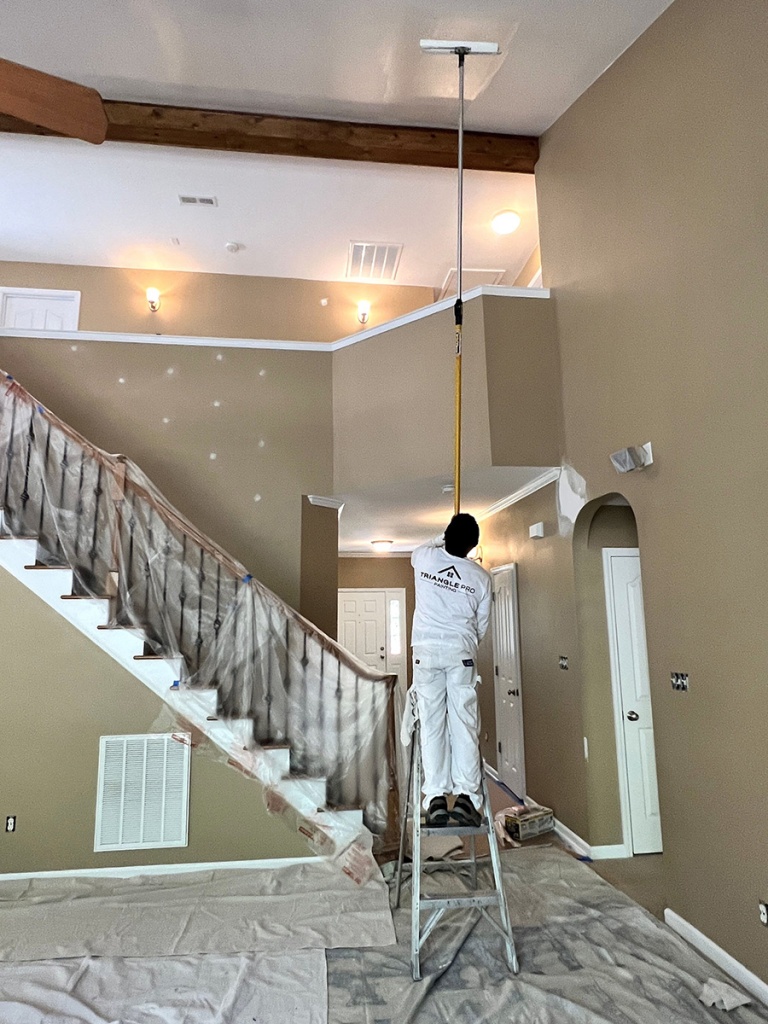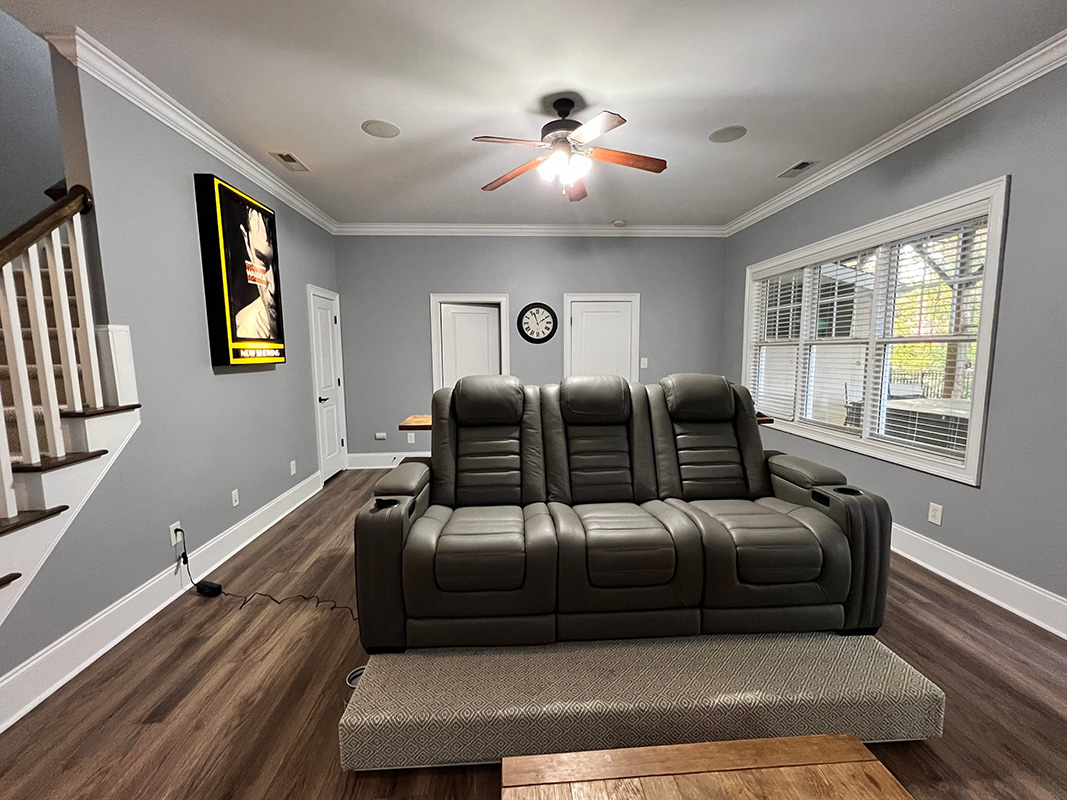Being in charge of getting your house painted can be a great way to bring out your creativity and the painter inside. However, before making any decisions, you should know about the pitfalls you – or an amateur painting contractor – might face with a project like this!
From choosing the wrong color palette to overlooking pre-paint preparation, numerous things could derail even professional painters from achieving optimum results. Thus, to ensure an effortless painting experience, take note of these helpful tips curated by the experts at Triangle Pro Painting!
Here’s How to Paint Your Residential Space
Cover Everything
To ensure everything in your house remains clean, ensure that either you or the painting company installs protection sheets on your furniture and floors, such as a plastic or waterproof drop cloth.
We advise protecting the doorknobs by putting them in small plastic sandwich bags and sealing them with tape. Another essential thing to do is to cover light switches and outlets to prevent paint splashes.
Sand Your Walls
Sanding not only smoothens out paint that has been chipped, but it also gives the next coat of paint a tooth – a textured surface that can hold the paint. We suggest using a sanding sponge instead of sandpaper if you want a shinier trim. Plus, sponges can be shaped to fit the edge and last longer than paper.
Inexperienced painters often make the mistake of not sanding before they start to paint, which results in the paint peeling in less than a year. Therefore, ensure the walls are thoroughly sanded if you want the paint to last longer.
Wait For Dry Weather
Don’t paint when it’s raining, or it’ll drip and take longer to dry. However, if you’re getting your house painted in humid weather, ensure that you’re using paint that dries slowly. That way, it’s easy to fix mistakes before it’s too late.
There are various weatherproof paints in the market, but they only work once they have properly dried. Therefore, try not to fall into the trap of false advertisements.
Pick Quality Products
Whether or not you want to spend a lot of money on good paint, you’d certainly want to use high-quality brushes and roller covers. These products give great coverage, meaning that reapplying paint and, hence, wasting time and color won’t even be in question.
Also, using high-quality tape is essential for keeping drips and smudges from showing. We suggest getting the Scotch Blue Painter’s tape for your DIY painting project.
Keep The Paint Color Consistent
Even if you choose the same color formula to mix the paint, the colors could differ from one can to the next. To keep the paint color consistent, pour all the paint you’ll need for the job into a single container (a five-gallon bucket works well) and mix it well instead of using the cans and painting one at a time.
Clean Up Mistakes Before The Paint Dries
If a brushstroke falls on the wall by accident, don’t worry. Wet paint is easy to clean up. If you keep a damp fabric nearby, you can stretch it over a finger and wipe the wet paint off the wall.
It is also common knowledge that leaving overlapping marks can make your painting look like you didn’t do the job well. The shinier the paint is, the more likely it is for the marks to overlap. So, keep the edge of your brush or roller wet if you want a glossy and even paint job. This step can help reduce the chance of marks running into each other. And while glossy paint can be tough to work with, you don’t have to worry too much about overlapping marks when using a flat or matte paint.
Use A Good Primer
Primers aren’t just diluted paint. They are made to create a solid and even base, seal stains, and ensure that the top coats of paint go on smoothly and stick well to the surface.
Use paint and primer together if the surface is clean and smooth. However, if the wall is damaged or you last painted a few years ago, you should bite the bullet and use a separate primer.
And if you need to cover a surface that is hard for paint to stick to, like glass or high-gloss paint, use a bonding primer like Benjamin Moore’s Bonding Primer.
Load The Paint Brush The Right Way
The next step is to figure out how much paint to put on the brush. To figure that out, we advise dipping the brush into the paint can just far enough so that there is two fingers’ width of paint on the end of the brush.
Using too much paint will make the ferrule heavy, altering the brush strokes. On the other hand, using too little will just drag the project on forever.
Paint From Top To Bottom
After using a brush to smoothen out paint on the edges of the ceiling and baseboard, the best course of action is to use a roller to paint from the ceiling down. Most amateur painters leave drips and splatters at the end of a job, but professionals just paint over their mistakes as they go down the wall.
Once a place starts to dry out, it’s best not to touch it. Going over it again can leave marks and streaks of color on the surface.
Conclusion
A good paint job can completely revitalize the look of your house. However, if you’re too inexperienced to get the job done yourself, you can rely on the expertise of professionals at Triangle Pro Painting. Now, you can breathe new life into your home without spending too much money!
If you have any questions about our painting services, head over to our website to chat with a professional or request a free estimate for your home. You can also call us at (919) 420-3410 or visit us at 2617 Rowland Rd Suite 102, Raleigh, NC today!











